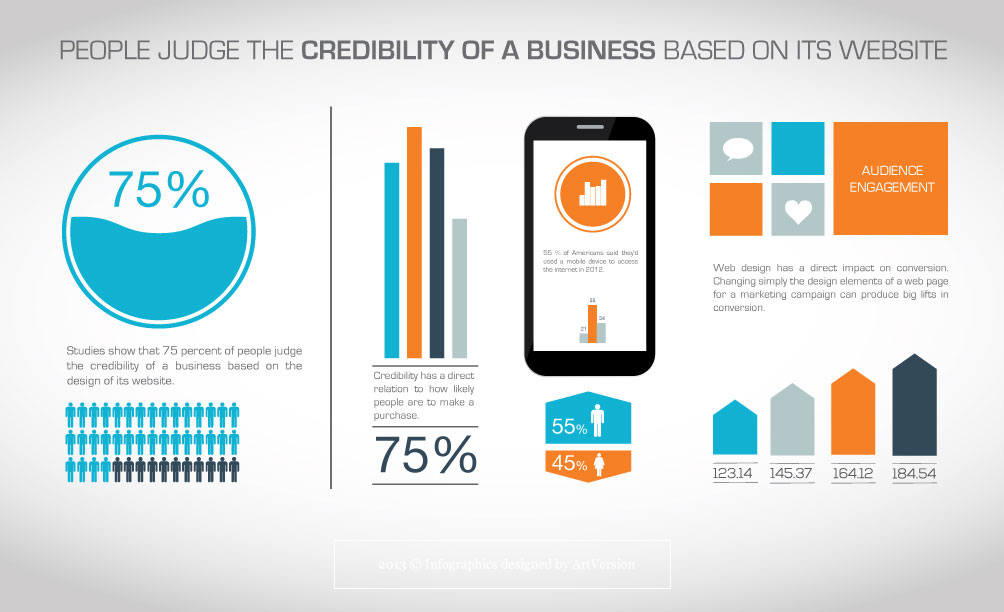Crafting A User-Friendly Site: Strategies And Strategies For Website Design Success
Crafting A User-Friendly Site: Strategies And Strategies For Website Design Success
Blog Article
Created By-Macdonald Mathis
Master the art of website design by focusing on customer experience. Craft instinctive navigation and opt for mobile optimization to boost the surfing experience. Guarantee easy navigation with clear headings and enticing visuals. Prioritize mobile responsiveness for a regular user experience. By including these important layout concepts, you can develop an easy to use site that captivates visitors.
Crucial Style Concepts
When making an internet site, prioritize individual experience above all else. Your primary goal ought to be to create a seamless and pleasurable experience for your site visitors. Beginning by ensuring that why not try this out is easy to browse. Use clear headings, organized food selections, and intuitive switches to guide customers through your web content effortlessly. Keep in mind, simplicity is key. Stay clear of littering your web pages with unnecessary elements that can bewilder or perplex your audience.
Another crucial design concept is to make certain your web site is visually attractive. Pick a natural color design, top quality pictures, and understandable fonts to enhance the general look of your site. Uniformity is essential in developing a solid brand name identity and making your internet site extra remarkable to customers.
In addition, prioritize mobile responsiveness. With more people searching the web on their smartphones and tablet computers, it's essential that your web site looks and functions well on all devices. Test your website on different screen dimensions to ensure a smooth experience for all customers. By focusing on these necessary style principles, you can produce an easy to use website that maintains site visitors coming back for more.
User-Focused Navigating
To improve customer engagement and simplify their surfing experience, prioritize creating user-friendly navigating pathways that lead visitors seamlessly via your web site. Clear and well-organized navigating is crucial for helping individuals locate the information they need promptly and successfully. Begin by keeping your menu framework straightforward and understandable. Usage descriptive labels that plainly suggest what content can be discovered under each menu option. Furthermore, consider executing dropdown menus for subcategories to stop overcrowding the main navigation bar.
An additional essential element of user-focused navigating is the use of breadcrumbs. Breadcrumbs are a second navigating help that reveals customers their present place on the web site and permits them to conveniently navigate back to previous pages. This attribute is especially handy for users that enter your site with a deep link or a search engine result.
Furthermore, incorporating search functionality plainly on your site can better improve customer navigating. A search bar permits individuals to swiftly find certain content without having to click via multiple pages. Ensure that your search bar is quickly noticeable and available on every web page of your website for maximum usability. By prioritizing user-focused navigating strategies, you can produce an extra instinctive and pleasurable browsing experience for your visitors.
Mobile Optimization Techniques
Consider enhancing your internet site for mobile phones to ensure a smooth individual experience across different screen sizes. Mobile optimization is vital in today's digital landscape where a significant portion of web browsing happens on mobile phones and tablet computers.
To boost mobile usability, beginning by carrying out receptive style strategies. This technique allows your web site to adapt to various display dimensions, preserving capability and aesthetics.
Focus on enhancing filling times for mobile users. Slow-loading sites can prevent visitors and effect your search engine positions. Compress photos, lessen HTTP requests, and take advantage of browser caching to boost packing speed. In addition, focus on content power structure for mobile displays. Ensure that necessary details is prominently shown, and navigating is user-friendly, promoting easy accessibility to essential areas.
Utilize touch-friendly components such as larger switches and structured types to facilitate communication on mobile phones. Conduct detailed screening across different mobile platforms to identify and remedy any kind of functionality issues.
Verdict
Finally, grasping the art of website design is critical for creating an easy to use internet site. By integrating necessary style principles, user-focused navigating, and mobile optimization techniques, you can guarantee a smooth and pleasurable experience for your site visitors.
As an example, a local pastry shop saw a 30% rise in online orders after revamping their internet site to be much more easy to use and mobile-responsive. Remember, a well-designed web site can make all the difference in bring in and maintaining clients.
